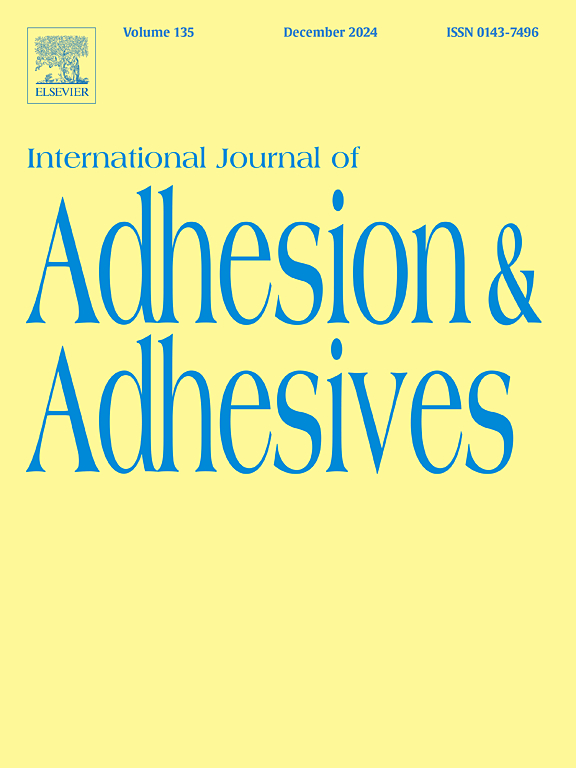多材料熔丝制备(FFF)打印聚合物复合结构界面性能分析
IF 3.2
3区 材料科学
Q2 ENGINEERING, CHEMICAL
International Journal of Adhesion and Adhesives
Pub Date : 2025-06-05
DOI:10.1016/j.ijadhadh.2025.104074
引用次数: 0
摘要
多材料3d打印(MM3DP)结构的界面特性是决定结构强度和预测失效的关键因素。本研究研究了在没有使用粘合剂或后处理技术(如焊接)的情况下,完全在单一工艺中使用熔融长丝制造的多材料单搭接接头的剪切行为。制作了由PLA、PETG和碳纤维增强PETG (PETC)的各种组合组成的关节。对搭接节点进行剪切测试,并使用同步正面和侧面摄像头视图的二维数字图像相关(2D DIC)分析应变场和破坏位置。结果表明,以PETG-PETC为代表的部分多材料节理抗剪强度达到2.701 MPa,与最强均质节理(PLA-PLA)的2.923 MPa相当,超过其他均质节理。短碳纤维在PETC中的存在增强了附着力,可能是由于在界面区域发生了机械联锁。这些发现表明,与单材料打印相比,当优化界面兼容性和工艺参数时,多材料FFF可以产生具有优越机械性能的复合结构。在一次打印过程中成功制造搭接,突出了为先进工程应用生产坚固、功能强大的多材料部件的可行性。本文章由计算机程序翻译,如有差异,请以英文原文为准。
Analysis of the interface properties of multi-material fused filament fabricated (FFF) printed polymer composite structures
Interface characteristics in multi-material 3D-printed (MM3DP) structures are a critical factor in determining the strength of the structures and predicting failure. This study investigated the shear behavior of multi-material single-lap joints fabricated entirely in a single process using Fused Filament Fabrication without the use of adhesives or post-processing techniques such as welding. The joints, comprising various combinations of PLA, PETG, and carbon-fiber reinforced PETG (PETC) were fabricated. The lap joints were subjected to shear testing, with strain fields and failure locations analyzed using two-dimensional digital image correlation (2D DIC) from synchronized front and side camera views. Results show that certain multi-material joints, particularly PETG-PETC, achieved a shear strength of 2.701 MPa, comparable to the 2.923 MPa strength of the strongest homogenous joint (PLA-PLA), and exceeding that of other homogenous joints. The presence of short carbon-fibers in PETC enhances adhesion, likely due to mechanical interlocking taking place at the interface region. These findings demonstrate that multi-material FFF, when optimized for interface compatibility and process parameters, can yield composite structures with superior mechanical properties compared to single-material prints. The successful fabrication of lap joints in a single print process highlights the feasibility of producing robust, functional multi-material components for advanced engineering applications.
求助全文
通过发布文献求助,成功后即可免费获取论文全文。
去求助
来源期刊

International Journal of Adhesion and Adhesives
工程技术-材料科学:综合
CiteScore
6.90
自引率
8.80%
发文量
200
审稿时长
8.3 months
期刊介绍:
The International Journal of Adhesion and Adhesives draws together the many aspects of the science and technology of adhesive materials, from fundamental research and development work to industrial applications. Subject areas covered include: interfacial interactions, surface chemistry, methods of testing, accumulation of test data on physical and mechanical properties, environmental effects, new adhesive materials, sealants, design of bonded joints, and manufacturing technology.
 求助内容:
求助内容: 应助结果提醒方式:
应助结果提醒方式:


